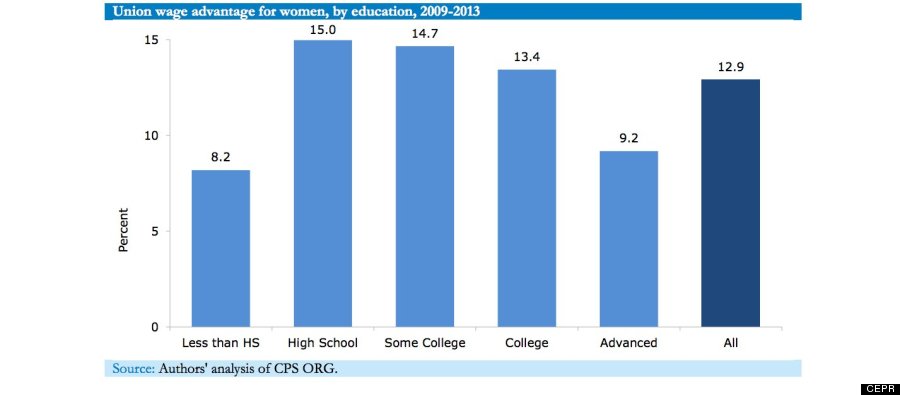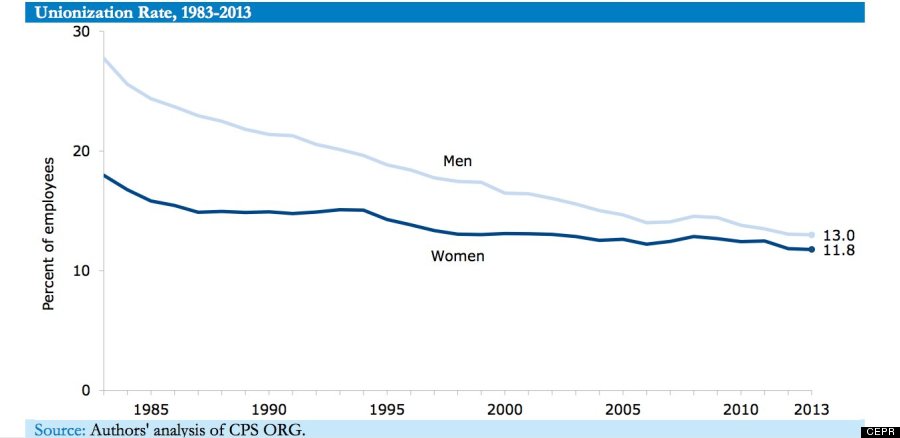The decline of unions has been bad for all workers hoping to join the middle class, but it has been especially terrible for women trying to keep up with men in any class.
Unions can be a useful tool for narrowing the gap between women and men at work, according to a recent paper by the Center for Economic and Policy Research, a left-leaning think tank that studies economic and social issues.
Women in unions make 12.9 percent more, on average, than their non-union counterparts, according to the study. For women with just a high school diploma, that difference is 15 percent. Women in unions with a college degree make 13.4 percent more than their non-union colleagues, the study found.

While being in a union also boosts pay for men, the effect of unionization is about 1.4 times larger for women, on average, according to an analysis earlier this year by the National Women’s Law Center.
Why do women benefit so much more from union membership? The CEPR paper has theories:
For one, unions tend to do the most for workers at the lower ends of the spectrum, and women are much more likely to be low-wage workers. Women make up about two-thirds of minimum-wage earners in the U.S., for example. They also entered low-wage jobs at a faster clip than their male counterparts between 2009 and 2013.
And collective-bargaining agreements typically make pay policies more transparent and less dependent on the whims of managers. Women often get paid more when their compensation system is more standardized, which keeps unconscious bias from seeping in. They also benefit from transparency because it’s easier to spot an obvious inequity when co-workers know how much their colleagues are getting paid.
In 2013, women working full-time earned about 82 percent of what their male colleagues made, according to a March study from the Institute for Women’s Policy Research. Unions could help close that gap; unfortunately, unionization rates for both women and men have plunged since the 1980s, as the CEPR notes.

Among the other possible consequences of the decline of unions are a shrinking middle class and companies that have boosted profits at the expense of workers.